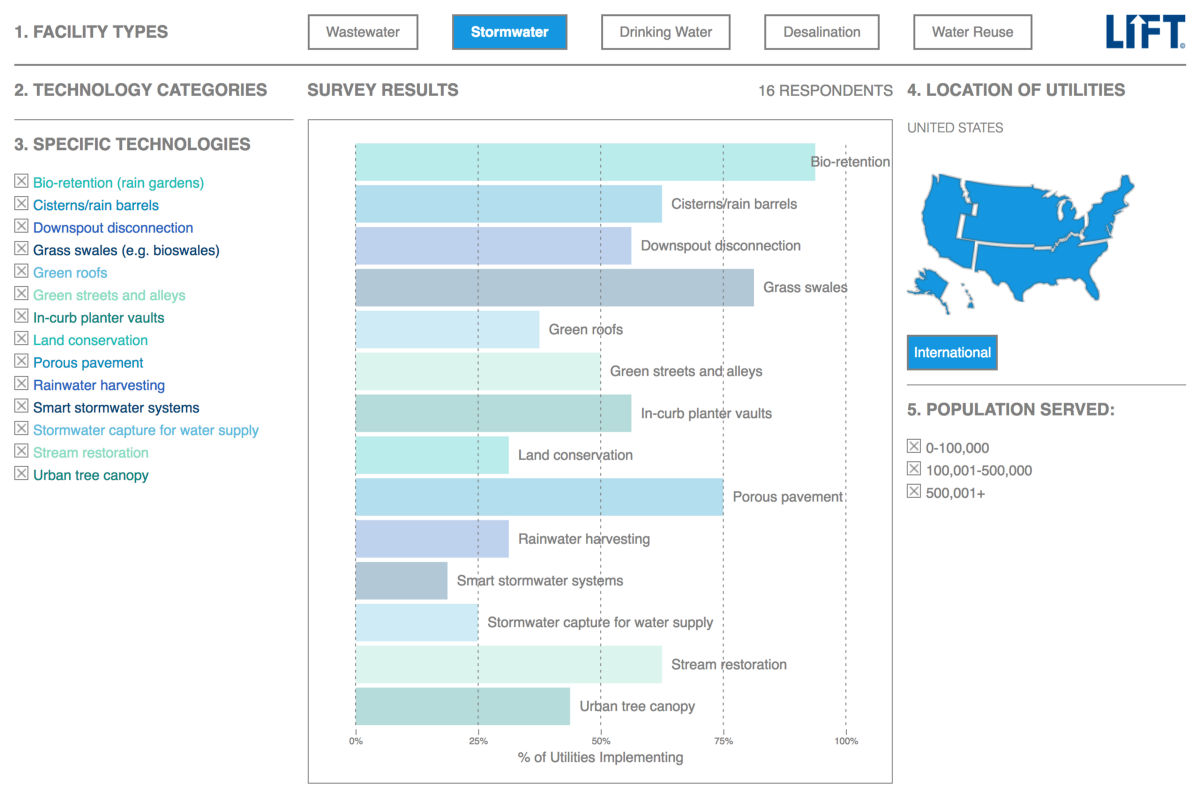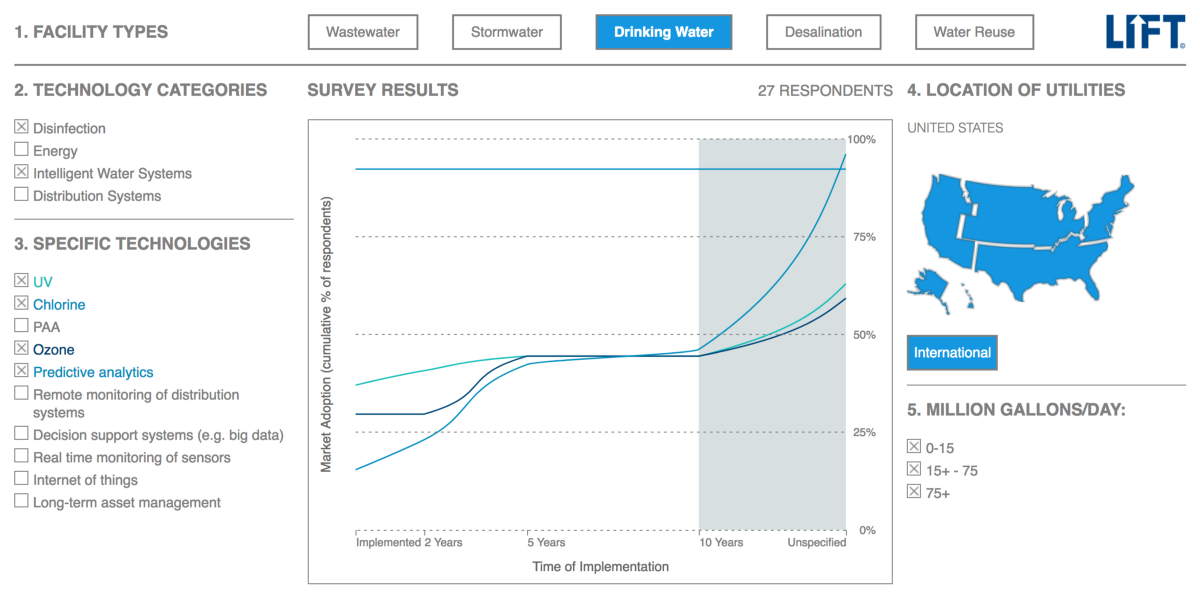
ALEC BURCH: We’ve just launched some new work with WE&RF, the Water Environment and Reuse Foundation. Every two to three years they send out a survey to different water utilities all across the country and across the world. The survey is centered around different types of water technologies that they are using, may use, or are interested in using at some time in the future. The questions ask a bunch of different questions about technologies, and each utility can specify their level of interest of a specific technology from already implemented to unsure. We’ve pulled all that data into a visualization that helps us understand who’s planning to implement which technology, and when. Or if they’ve already implemented a specific technology.
ERIC RODENBECK: And the technologies we’re talking about are for example those used to convert biosolids to energy, or to use algae to help purify wastewater, that kind of thing?
AB Right. And the main categories that they’re bucketed in are wastewater, stormwater, drinking water, desalination, and water reuse.
ER So these are all specific technologies that different utilities are planning to implement, or not implement, at some time in the future?
AB Yes. Some utilities aren’t interested in some technologies at all. Say someone is in Chicago, Illinois. They’re not going to be that interested in desalination technologies. But they might be really interested in water reuse or stormwater technologies.
ER So it’s a way to be able to get a sense of, across the industry, of what different municipalities are interested in implementing various technologies and when?
AB Exactly. And you can see how you are in comparison to your peers. Whether you’re lagging behind on some of the new technologies, or whether you’re really kind of setting the trends for cutting edge technologies.

ER And why do utilities care about that? Is it about peer awareness, or do they want to be able to know what other kinds of technologies people around them are using? Do they move as a group together?
AB If there are new technologies available, and they can make your utility more efficient, people tend to want to implement them. Or if you’re in a severe drought, like California was a year ago, and utilities are really trying to figure out new and innovative ways to reuse water, or to desalinate water then it’s good to see what else is going on and how you can really be on the cusp of innovation.
ER So you can start to look at things like who’s implementing new advanced water treatment technologies or stormwater capture technologies like cisterns and rain barrel policies, who’s implementing green roofs, that kind of thing?
AB Right. And the flip side of this is companies that make these technologies can use this information too. If you’re a company that sells algae to different water utility organizations, you can use this information to see where the market is heading.
ER I’m interested in this idea that there are specific and quantifiable markets for stormwater catchments and land conservation and porous pavement, that it’s something that can be studied and understood and used to build business around. For example, three-quarters of the people that were surveyed are interested in using porous pavement, which seems like a total no-brainer to me.
AB Yeah, and there are some things like chlorine treatment, for instance, that everyone uses.
ER For their drinking water? Is that true??
AB If you turn on chlorine in the graph, you’ll see a line at the top just shoot straight across. So 100%, everyone is using that. So you can see everything, from things that everyone are using to things that a lot of people are really interested in but they haven’t implemented yet —

ER So as we’re interested in the future of water in the United States, it’s a way to get a sense of who the players are and what their plans are.
AB Yes, and if you’re a utility, you can use the tool to see which specific utilities have implemented a new technology like phosphorous recovery from wastewater, and then connect with them.
ER So it’s a peer-to-peer networking tool for utilities.
AB Yeah, exactly. If you’re a WE&RF utility subscriber, you have an additional layer of information where you can get the contact information for a peer utility. You can click on one of these, then you can see all the technologies they’ve implemented, all the technologies they’re interested in installing in the next 2 years, 5 years, 10 years. Then you can contact that person to share information or collaborate on a project.
ER So there are three things at play here: championing the people who are doing new and interesting things, connecting peer utilities with shared technology interests to help leverage resources and efforts, and identifying market trends for new technologies and where they can go.
